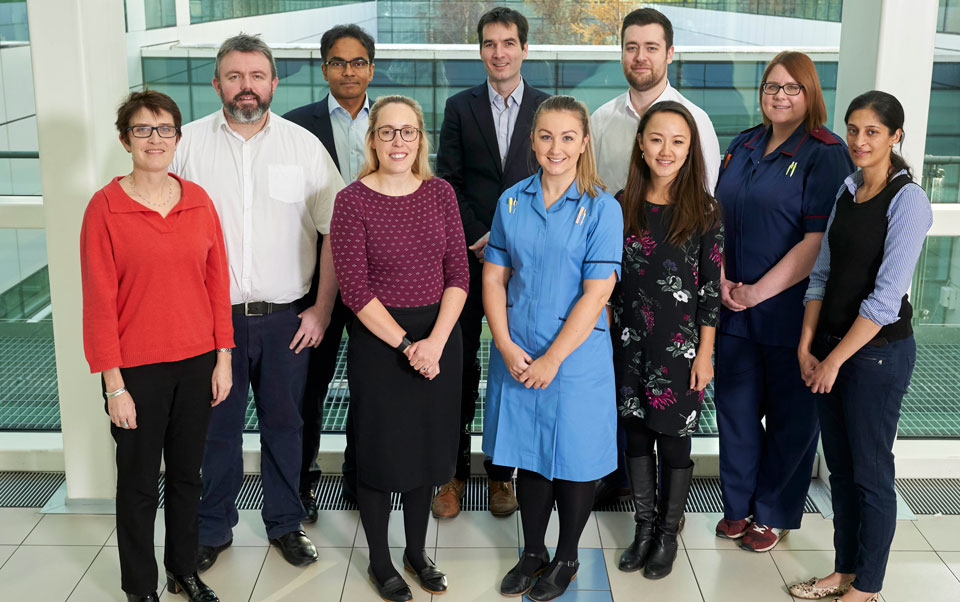- OT
- Professional support
- Health services
- The mechanisms of a team
The mechanisms of a team
OT finds out how joint working takes place in practice, in research and in education

03 September 2019
Joint working across multiple disciplines is key to the success of any project. By sharing experiences, knowledge and bringing together different skillsets, the cogs of a working machine function at a higher level and consistency in output can be delivered.
Across healthcare, including eye care, joint working provides a higher level of care and better outcomes for patients. It is also fundamental to the success of research and development.
From bench to the bedside
Neuroscience and ophthalmology lecturer at the University of Birmingham, Dr Lisa Hill, and specialist glaucoma consultant at Birmingham and Midland Eye Centre, Imran Masood, told OT that without joint working, their project into developing novel drug delivery mechanisms for glaucoma would not have been possible.
“It’s a lifelong relationship,” Mr Masood explained. “Both of our goals in relation to glaucoma is to try and come up with more curative kinds of therapies where we can reverse the underlying pathology. It will be a constant journey of learning and moving forward together,” he said.
Dr Hill added that joint working has been fundamental to the success of the project. “To be able to translate new therapies and get this understanding you have to have a multi-disciplinary team,” she shared.
The pair were brought together around six years ago when Dr Hill was completing her PhD on developing a model of anterior segment fibrosis as a surrogate for disease pathologies that occur in glaucoma.
Speaking about applying the knowledge and skills learned from years of experience in their respective professions, Dr Hill explained she approached the project from a fundamental scientific view, while Mr Masood thought about practical application and what would work for the patient.
“I don’t have a clinical background at all, so this has transformed my research going forward,” she shared.
To be able to translate new therapies and get this understanding you have to have a multi-disciplinary team
Because of their working relationship, Dr Hill gained access to waste tissue obtained by Mr Masood and used it to find out how the treatments reacted to the disease in humans. “If I didn’t have that, I would be limited to pre-clinical models and I wouldn’t have the extra capabilities to be able to see what is going on with the patient,” she said.
Mr Masood added: “Ultimately, you have lots of animal models for various diseases and a lot of the science behind it will help you identify some of the mechanisms. However, you have to have access to human tissue to understand the disease in the human species. That’s what you need to develop and pass therapies for human disease.”
Their working partnership is for life and Dr Hill joked that they are “stuck with each other.”
Mr Masood added: “We have to work together. The groups that work together are successful in getting therapies from the bench to the bedside.”

A different perspective
In March, the uveitis service at University Hospitals Birmingham was named Best Ophthalmology Team at the Bayer Ophthalmology Honours awards evening.
Teamwork is fundamental to the service’s aim to build a holistic, personalised service for patients with sight threatening inflammation.
Consultant lead for the uveitis service, Professor Alastair Denniston, explained to OT: “It’s quite a specialised branch of ophthalmology, which is why it’s so important to take a multi-disciplinary approach.”
The team works across professions including its colleagues in the rheumatology department, as well as its principal optometrist, Eshmael Palmer.
Speaking about working with other experts at the hospital, clinical nurse specialist in inflammatory eye disease and intravitreal injections, Robert Carmichael, said: “Our priority is patient care and that’s the most important unifying factor across the disciplines. We also have a shared interest in educating the patient on this particular disease.”
“We learn and borrow heavily from each other’s area of expertise. We share knowledge and case conference. There’s a lot of cross-disciplinary working,” he added.
The uveitis team has regular research briefings and a pre-clinic team meeting where a member of the team will go through notes and outline the keys issues and what needs to be done.
Our priority is patient care and that’s the most important unifying factor across the disciplines
Professor Denniston shared: “We meet before the clinic starts and go through patient by patient to flag any problems. I think it’s really important and if you can set aside that time it’s very helpful for delivering patient care.”
“We also have a very reflective practice method. Whether things have gone well or badly, we reflect on how it went and what the learning points are. That can be a difficult consultation and we have to ask if we managed to communicate the important points,” he added.
Clinical research fellow, Dr Xiauxuan Lio, is on her first ophthalmology clinical placement with the uveitis service and works closely with the clinical and research teams.
Dr Lio shared that there is a very good learning environment at the hospital. “We have a culture of being able to ask questions and there’s never a feeling of being too scared to ask questions; everyone is willing to help,” she explained.
Dr Lio told OT that the training medics go through during their career takes place in a hierarchical environment and learnings come from people who are more experienced than you. “You also learn things from a different perspective, such as the nursing team, and realise how one-sided your view can be if you’re not flexible to that,” she said.
Mr Carmichael added: “The uveitis service wouldn’t be a success without joint working, the mutual respect and the patient involvement we all have.”
Image credit: Alex Trochut (banner)

Comments (0)
You must be logged in to join the discussion. Log in